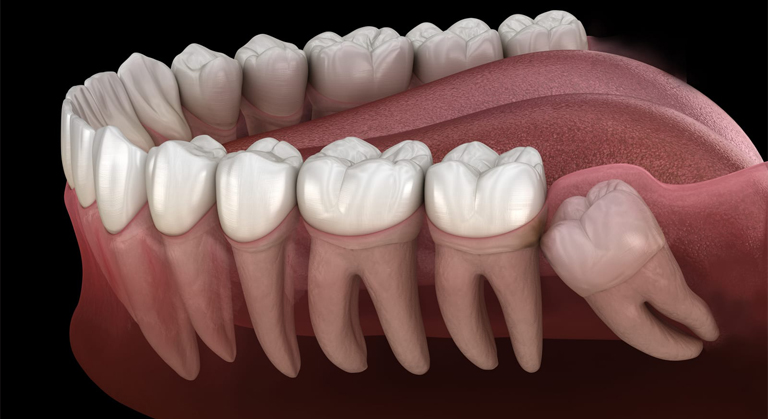Disimpaction

An impacted tooth is one that fails to erupt into the dental arch within the expected developmental window. Because impacted teeth do not erupt, they are retained throughout the individual's lifetime unless extracted or exposed surgically. Teeth may become impacted because of adjacent teeth, dense overlying bone, excessive soft tissue or a genetic abnormality. Most often, the cause of impaction is inadequate arch length and space in which to erupt. That is the total length of the alveolar arch is smaller than the tooth arch (the combined mesiodistal width of each tooth). The wisdom teeth (third molars) are frequently impacted because they are the last teeth to erupt in the oral cavity. Mandibular third molars are more commonly impacted than their maxillary counterparts. As a general rule, all impacted teeth must be removed,except canine teeth; canines do not need surgery and may just remain buried and give no further problems.
An impacted tooth is a tooth that has not erupted, which means, it has not emerged above the gum line yet. This can happen because of several conditions. The teeth that are impacted most commonly are the wisdom teeth.
It must be remembered that impacted teeth are different from embedded teeth, though both of these conditions have the teeth present under the gum line, which do not emerge outside. When teeth are embedded, they are actually covered by a bone which stops them from emerging above the gum line. However, teeth that are impacted are teeth that just do not grow, because of which they are not able to come out of the gum line because of improper position.
Impacted teeth happen most frequently with the wisdom teeth. But in some people, the jaw does not allow the accommodation of these four wisdom teeth. That is the reason why the teeth cannot come above the gum line and they remain inside. Hence, the person becomes a victim of impacted teeth.
Most cases of suppressed teeth are diagnosed by a physical examination of the area. In case if any sign of infection is present and there is no tooth in the area, the dentist will find out whether the situation is indeed of impacted teeth or not. Once that is decided, the treatment mode is then thought about.
One of the routes that are adopted for the treatment of impacted teeth is to extract the four wisdom teeth that are suppressed inside. Different kinds of dental extraction processes are used, depending on how serious the condition is. The mandibular impacted teeth require surgical extraction, which requires raising the gum flap and bone cutting and placement of sutures after the procedure.